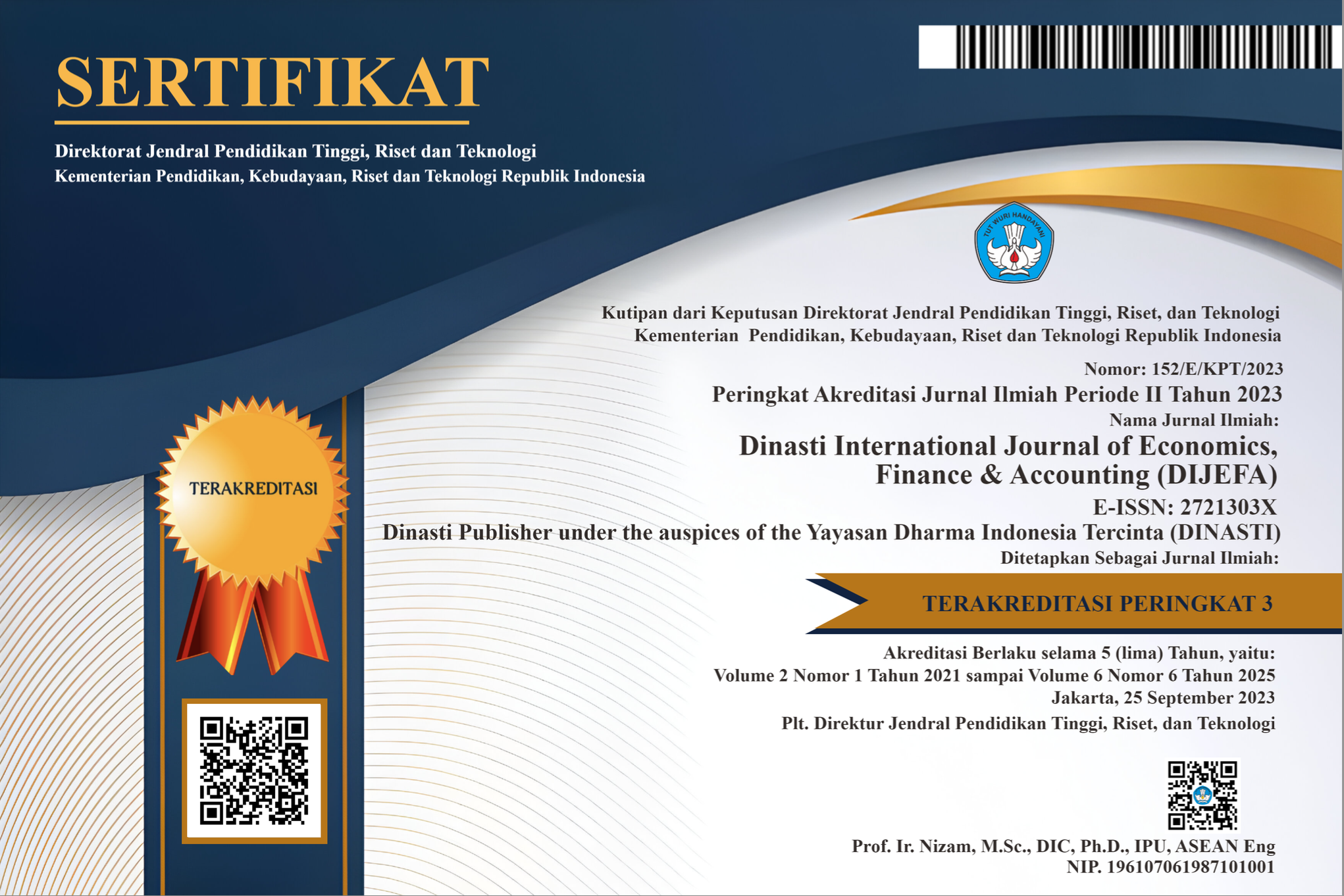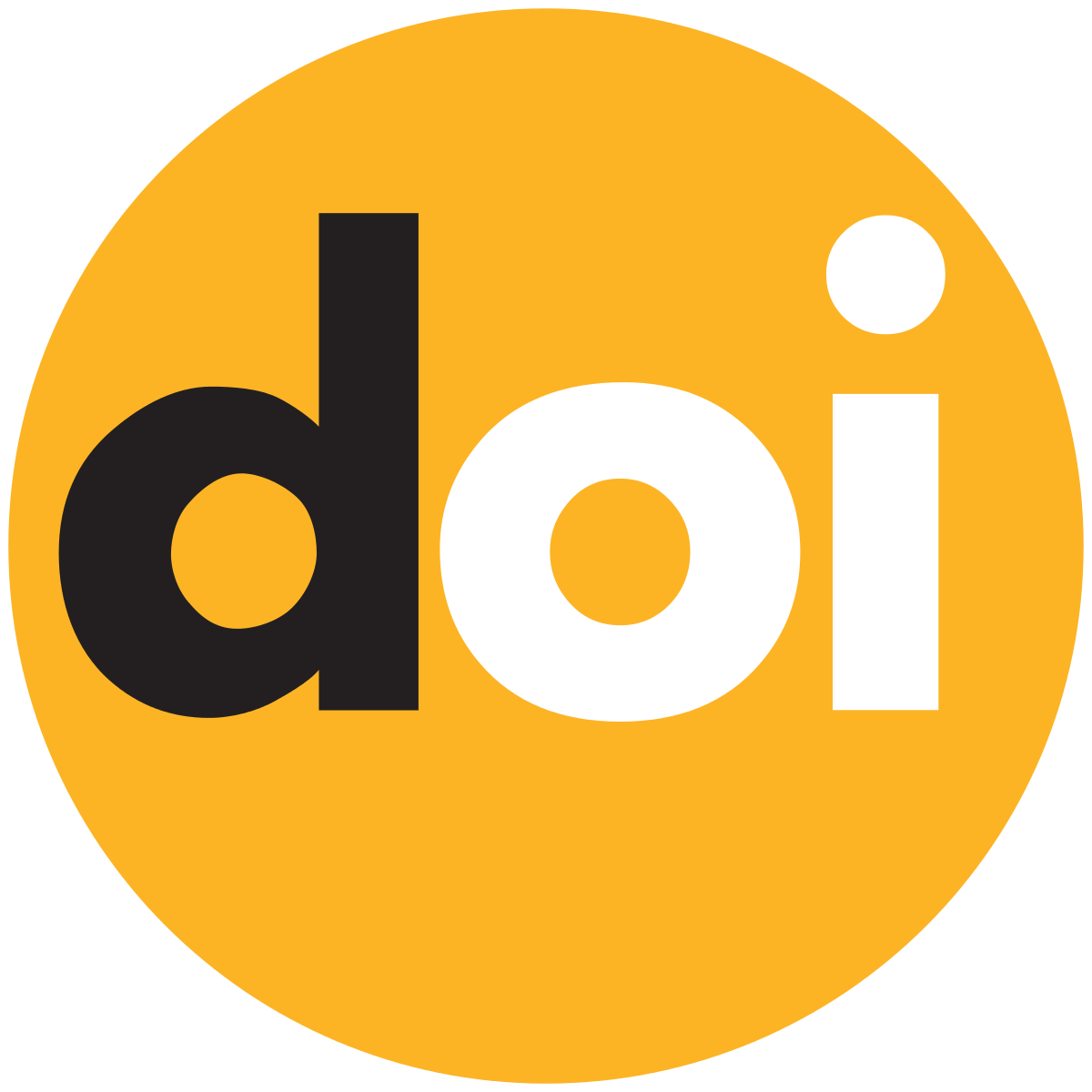Carbon Emissions Disclosure: Return on Assets, Leverage and Media Exposure
DOI:
https://doi.org/10.38035/dijefa.v5i5.3441Keywords:
Leverage, Media Exposure, Return on AssetsAbstract
The purpose of this study is to prove the hypothesis that return on assets, leverage projected by debt to equity ratio and media exposure affect the disclosure of carbon emissions. This type of research uses a quantitative approach. The population in this study are mining companies listed on the IDX in 2018-2022. The total population is 52 companies. Researchers apply a non-probability sampling method, which will specifically be carried out using purposive sampling method, then a total sample of 26 companies is found. The data collection technique used in this exploration is the documentation strategy. Then the data analysis uses multiple linear regression analysis method to analyze the effect of independent variables on the dependent which is processed using Statistical Program for Social Science (SPSS) 25 software program. Based on hypothesis testing, the results show that media exposure has a positive and significant effect on carbon emission disclosure. Meanwhile, Return on Asset and Debt to Equity Ratio have no significant effect on carbon emission disclosure.
References
Ahdiat A. Emisi Karbon Global Naik Lagi pada 2022, Pecahkan Rekor Baru [Internet]. databoks. 2023. Available from: https://databoks.katadata.co.id/datapublish/2023/03/03/emisi-karbon-global-naik-lagi-pada-2022-pecahkan-rekor-baru
Madyan M. Analisis Pengungkapan Emisi Karbon Perusahaan Indonesia. Unair News [Internet]. 2024; Available from: https://unair.ac.id/analisis-pengungkapan-emisi-karbon-perusahaan-indonesia/
Abdullah MW, Musriani R, Syariati A, Hanafie H. Carbon emission disclosure in indonesian firms: The test of media-exposure moderating effects. Int J Energy Econ Policy. 2020;10(6):732–41.
Ayu Laksani S, Andesto R, Kirana DJ. Carbon Emission Disclosure Ditinjau dari Nilai Perusahaan, Leverage dan Media Exposure. Stud Akunt dan Keuang Indones. 2021;3(2):145–64.
Luo L, Tang Q, Lan Y. Comparison of propensity for carbon disclosure between developing and developed countries. Account Res J [Internet]. 2013 Jan 1;26(1):6–34. Available from: https://doi.org/10.1108/ARJ-04-2012-0024
Pratiwi PC, Sari VF. Pengaruh Tipe Industri, Media Exposure dan Profitabilitas terhadap Carbon Emission Disclosure. Wahana Ris Akunt [Internet]. 2016;4(2):829–43. Available from: www.idx.co.id
Amaliyah I, Solikhah B. Pengaruh Kinerja Lingkungan dan Karakteristik Corporate Governance Terhadap Pengungkapan Emisi Karbon. J Econ Manag Account Technol. 2019;2(2):129–41.
Yeni SP, Asmeri R, Yanti N. Pengaruh profitabilitas dan ukuran perusahaan terhadap carbon emissions disclosure pada perusahaan LQ-45 yang terdaftar di bursa efek Indonesia (BEI) tahun 2014-2018. Pareso J [Internet]. 2021;3(1):95–106. Available from: http://www.ecolife.com
Apriliana E, Ermaya HNL, Septyan K. Pengaruh Tipe Industri, Kinerja Lingkungan, Dan Profitabilitas Terhadap Carbon Emission Disclosure. Widyakala J. 2019;6(1):84.
Zhang S, McNicholas P, Birt. J. Australian corporate responses to climate change: the Carbon Disclosure Project. J Account. 2012;
Choi BB, Lee D, Psaros J. An analysis of Australian company carbon emission disclosures. emerald insight [Internet]. 2013; Available from: https://www.emerald.com/insight/content/doi/10.1108/01140581311318968/full/html
Wirawan J, Setijaningsih HT. Analisis Pengungkapan Emisi Karbon Di Indonesia. J Muara Ilmu Ekon dan Bisnis. 2022;6(1):235.
Downloads
Published
How to Cite
Issue
Section
License
Copyright (c) 2024 Lestari Lestari, Caturida Meiwanto Doktoralina, Sigit Mareta, Ari Apriani, Lutfi Alhazami

This work is licensed under a Creative Commons Attribution 4.0 International License.
Authors who publish their manuscripts in this journal agree to the following conditions:
- The copyright on each article belongs to the author(s).
- The author acknowledges that the Dinasti International Journal of Economics, Finance & Accounting (DIJEFA) has the right to be the first to publish with a Creative Commons Attribution 4.0 International license (Attribution 4.0 International (CC BY 4.0).
- Authors can submit articles separately, arrange for the non-exclusive distribution of manuscripts that have been published in this journal into other versions (e.g., sent to the author's institutional repository, publication into books, etc.), by acknowledging that the manuscript has been published for the first time in the Dinasti International Journal of Economics, Finance & Accounting (DIJEFA).


























































